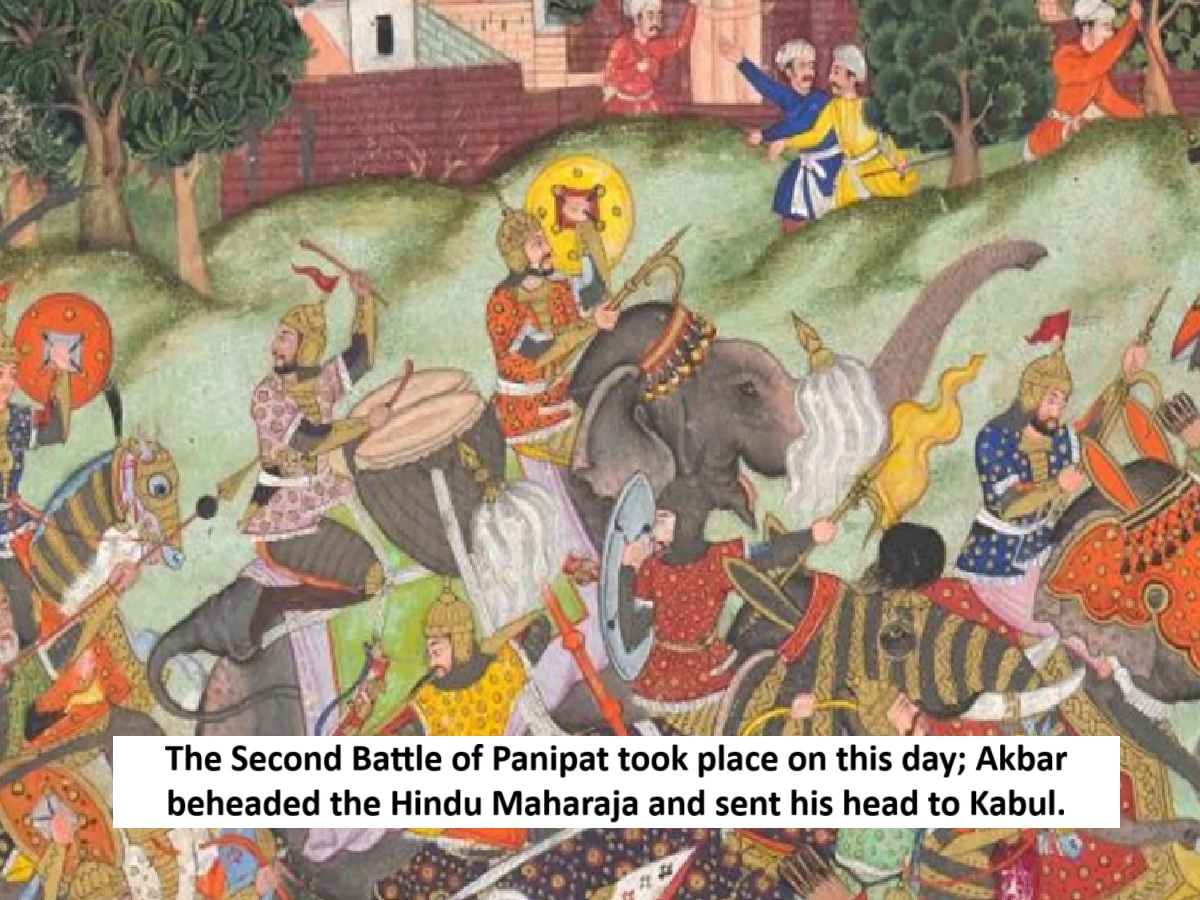
News Topical, Digital Desk : Exactly 469 years ago, on November 5, 1556, Panipat witnessed a decisive battle in Indian history. This was the Second Battle of Panipat, pitting the 13-year-old Mughal emperor Akbar and his guardian, Bairam Khan, against the Hindu warrior Hemchandra Vikramaditya, known as Hemu. Just weeks earlier, Hemu had captured Delhi and Agra and declared himself Vikramaditya. But a single arrow in this battle changed everything, and Akbar beheaded Hemu, earning him the title of Ghazi.
Hemu became the emperor after the death of Sher Shah Suri.
Hemu's story exemplifies the extraordinary. This Hindu warrior from Rewari was a longtime associate of Sher Shah Suri. Sher Shah's death threw the Suri Empire into disarray. Islam Shah Suri's death in 1554 sparked a struggle for the throne, leading to the separation of several territories. Humayun seized this opportunity and recaptured Delhi and Agra on July 23, 1555. However, Humayun died on January 27, 1556.
Hemu was in Bengal at the time. He immediately marched towards Delhi and drove the Mughals out of areas such as Bayana, Etawah, Bharthana, Bidhuna, Lakhna, Sambhal, Kalpi, and Narnaul. The governor of Agra fled without a fight. He then defeated Tardi Beg Khan, the Mughal governor of Delhi, at the Battle of Tughlaqabad. He captured Delhi on October 7, 1556, and proclaimed himself Vikramaditya at Purana Qila.
Just one arrow changed the history of India.
Upon hearing the news of Tughlaqabad's defeat, 13-year-old Akbar and Bairam Khan marched towards Delhi. On the way, Ali Quli Khan Shaibani looted a large portion of Hemu's artillery, a major setback for Hemu. On November 5, 1556, the two armies faced each other at Panipat. Akbar and Bairam Khan remained behind, about 12-14 kilometers away. The Mughal army was led by Ali Quli Khan Shaibani, who had about 10,000 cavalry. Sikandar Khan Uzbak was on the right flank, and Abdullah Khan Uzbak was on the left flank. Hussain Quli Beg and Shah Quli Mahram were in the front line
On the other hand, Hemu's army was larger in number. He had 30,000 Afghan cavalry and 500 elephants. Each elephant was armored and mounted by archers. Hemu himself rode an elephant named Hawai. His left flank was commanded by his nephew Ramya, and his right flank by Shadi Khan Kakar. Hemu had experience in 22 battles, but this time he did not have cannons. Hemu began the battle by attacking with elephants. The elephant attack initially scattered the Mughal army, but the Mughal cavalry was swift and showered Hemu's cavalry with arrows.
Moving forward, the Mughal army stopped near a deep ditch. Hemu's elephants and horses could not cross the ditch. Mughal cavalry attacked from behind, cutting off the elephants' legs and killing their riders. Hemu pulled the elephants back, but Ali Quli Khan unleashed his cavalry and attacked Hemu's army from behind. Hemu counterattacked, but Shadi Khan Kakar and Bhagwan Das were killed. Hemu was close to victory when an arrow struck him in the eye, and he fell unconscious.
Just two mistakes turned Hemu's victory into defeat.
Hemu's biggest mistake was leaving his artillery poorly guarded, which Ali Quli Khan easily looted. The lack of cannons proved fatal in the battle. His second mistake was fighting from the front. Had he remained behind and taken command, neither would he have been hit by an arrow nor would his army have fled in panic. His unconsciousness spread panic throughout the army, and the army fled. More than 5,000 of Hemu's soldiers were killed in the battle.
Read More: New twist in Sandekhali case, truck driver who hit witness arrested
--Advertisement--

 Share
Share



